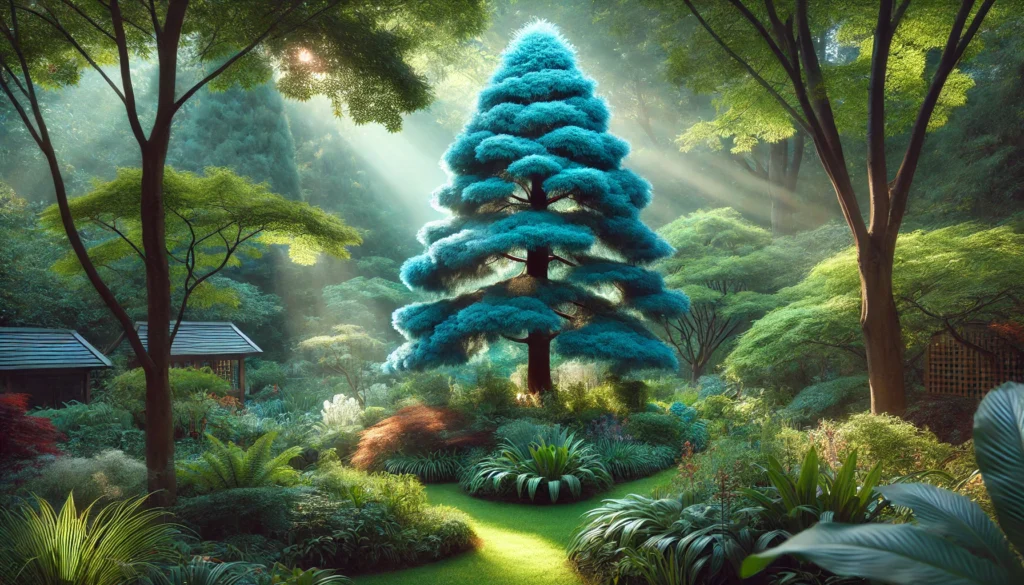
How to Grow and Care for a Blue Sequoia Tree: A Complete Guide for Success
Imagine adding a stunning blue sequoia tree to your garden—its unique, silvery-blue foliage creating a striking contrast against the backdrop of your yard. 
If you’ve ever wondered how to successfully grow a blue sequoia tree and make it thrive in your landscape, you’re in the right place. This guide will walk you through the essential steps—choosing the best spot, planting, maintaining, and troubleshooting any issues—so that you can enjoy the beauty and benefits of this magnificent tree. Let’s dive in and unlock the secrets to growing a healthy and thriving blue sequoia tree in your yard!
Table of Contents
ToggleUnderstanding the Blue Sequoia Tree 
The Blue Sequoia Tree (Sequoiadendron giganteum) is a stunning evergreen conifer that’s known for its striking blue-green foliage and massive size. Native to the Sierra Nevada mountains in California, these trees can live for thousands of years, making them one of the oldest and most resilient tree species on Earth. Whether you’re a nature lover or a gardener looking to add a unique touch to your landscape, understanding the Blue Sequoia’s growth habits, environmental needs, and care requirements will help you ensure its long-term success 
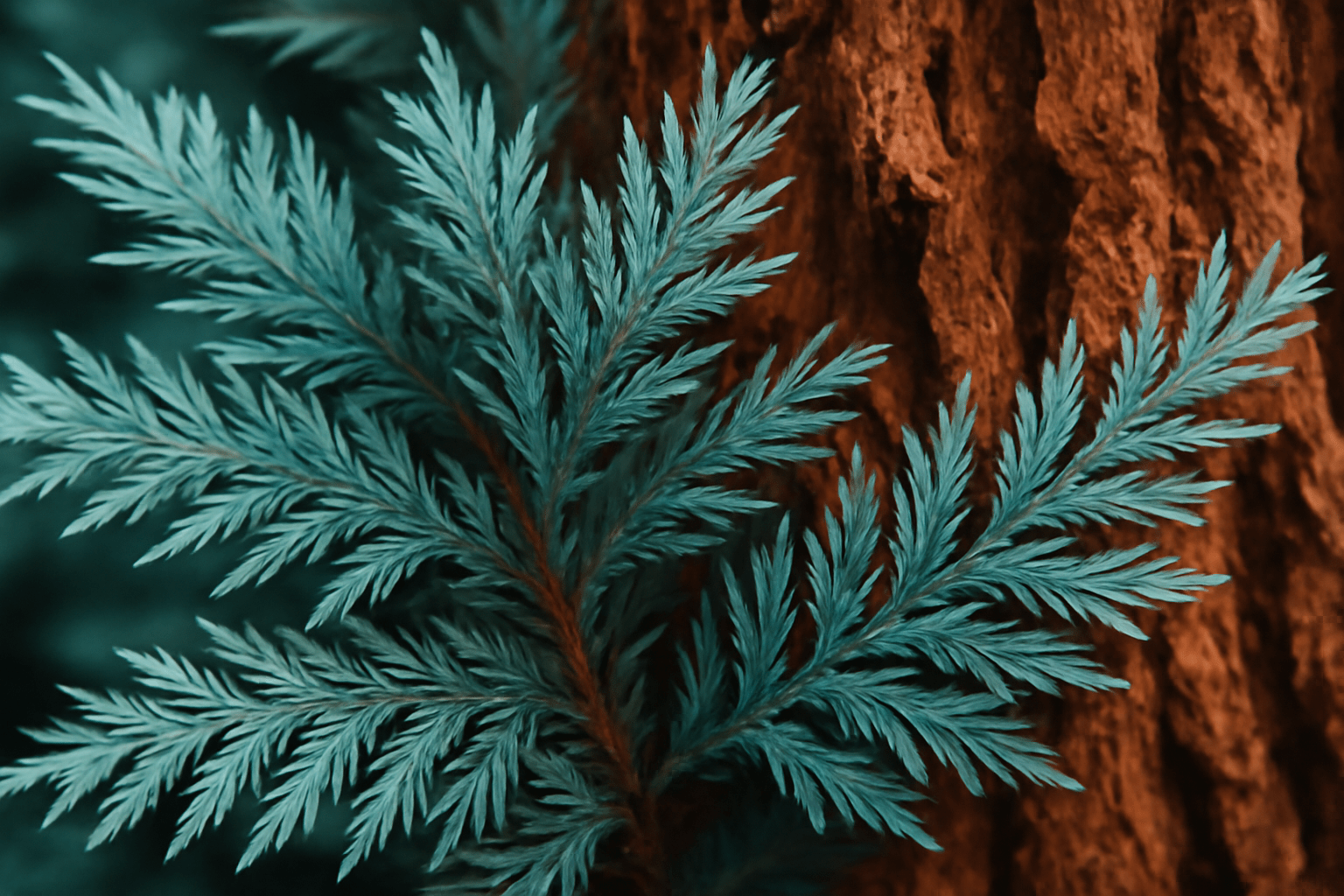
What Makes the Blue Sequoia Special? 
Unlike typical green sequoias, the Blue Sequoia stands out due to its beautiful bluish hue. Its foliage gives off a cool, calming color, which adds a magical touch to any garden or backyard. The tree grows tall and strong, with some specimens reaching up to 300 feet in height in their natural habitat! However, in a garden or backyard, it can still thrive, reaching up to 100 feet with the right care 
Key Features of the Blue Sequoia 
- Size: As the name suggests, Blue Sequoias are gigantic. They can grow rapidly if planted in the right conditions.
- Foliage: The leaves are needle-like and display a distinct blue tint, which is most noticeable when the tree is young.
- Bark: The bark is reddish-brown, spongy, and thick, helping the tree withstand fires.
- Longevity: These trees are known for their long lifespan, often living for over 3,000 years in the wild!
Ideal Growing Conditions for Blue Sequoia 

To help your Blue Sequoia thrive, it’s essential to mimic the conditions of its native environment. Here are the basics you need to know:
- Sunlight: Blue Sequoias love the sun! Plant them in a location where they can get at least 6-8 hours of direct sunlight daily
.
- Soil: They prefer well-draining, slightly acidic soil. Avoid heavy clay or overly soggy areas to prevent root rot
.
- Watering: Although Blue Sequoias are drought-tolerant once established, they need regular watering, especially when young. Water deeply to encourage deep root growth, but be sure not to overwater.
- Temperature: These trees are hardy in USDA zones 6-9, meaning they can withstand cold winters but thrive in mild, wet conditions
.
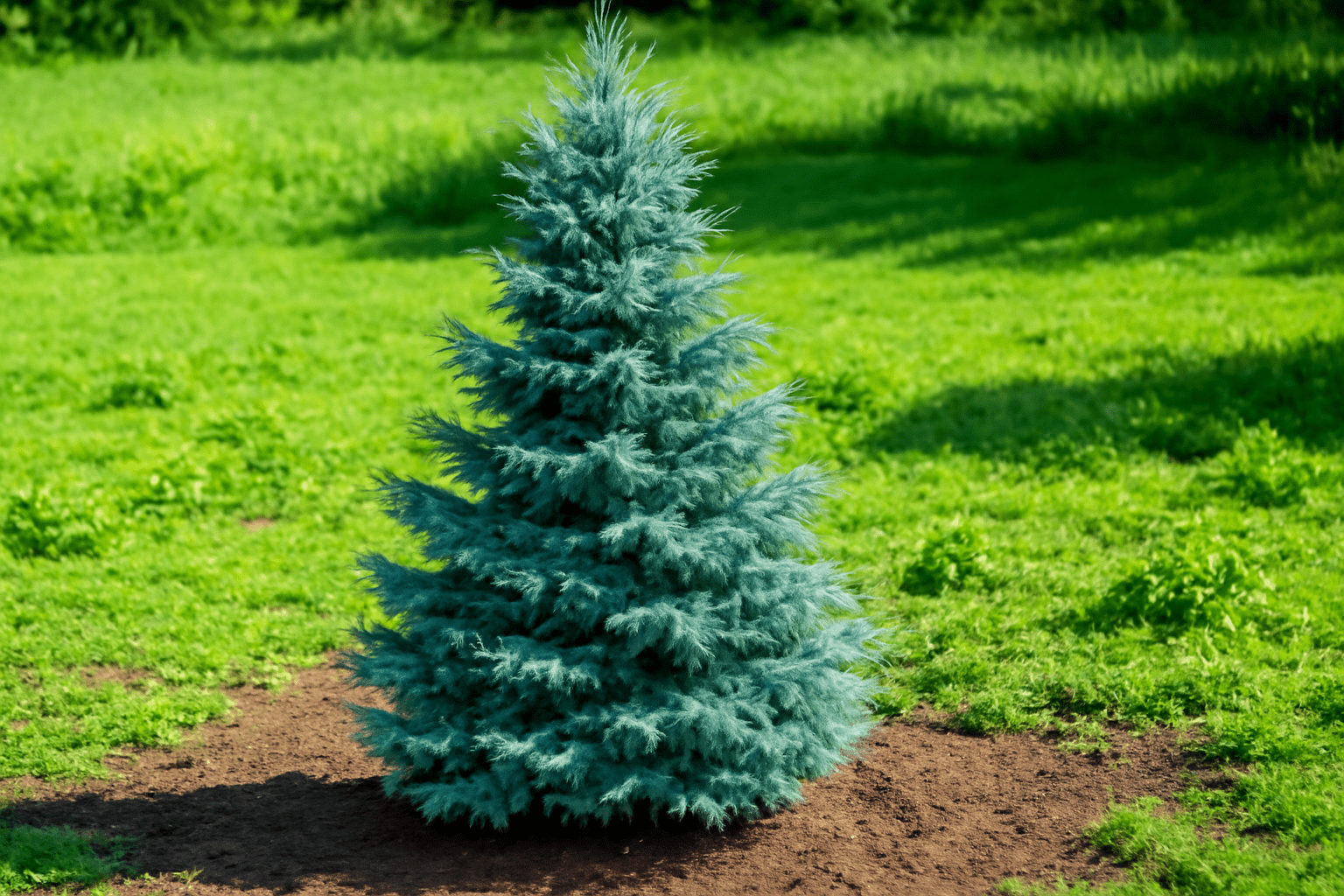
By understanding these basics, you can create the ideal environment to help your Blue Sequoia grow strong, tall, and healthy.
A Few Fun Facts! 
- Blue Sequoias are among the tallest trees in the world, second only to the Coastal Redwoods
.
- They can absorb and store huge amounts of carbon, making them great for the environment!
Now that you know what makes the Blue Sequoia so special, let’s dive into how to care for it properly in the next section of our guide!
Growing a Blue Sequoia Tree 
Growing a Blue Sequoia Tree (Sequoiadendron giganteum) can be a rewarding experience that transforms your garden or landscape into a breathtaking space. Known for their towering height, striking blue-green needles, and majestic presence, these trees are a true wonder of nature. If you’re ready to add a Blue Sequoia to your yard, here’s everything you need to know for success!
1. Choose the Right Location 
Blue Sequoias thrive in areas that offer plenty of sunlight. Aim for a spot that gets at least 6 hours of direct sun daily. 
2. Prepare the Soil 
These trees prefer well-drained, slightly acidic soil. They won’t do well in heavy clay or soggy conditions, so make sure the ground drains well. If your soil is dense or prone to waterlogging, amend it with compost or sand to improve drainage. 
3. Planting the Tree 
Plant your Blue Sequoia sapling during early spring or fall, when the weather is mild. Dig a hole twice as wide as the root ball but only as deep as the root ball itself. 
4. Watering 
Blue Sequoias are water-loving trees, but they don’t like to sit in water. The key is to keep the soil consistently moist, especially during dry periods. 
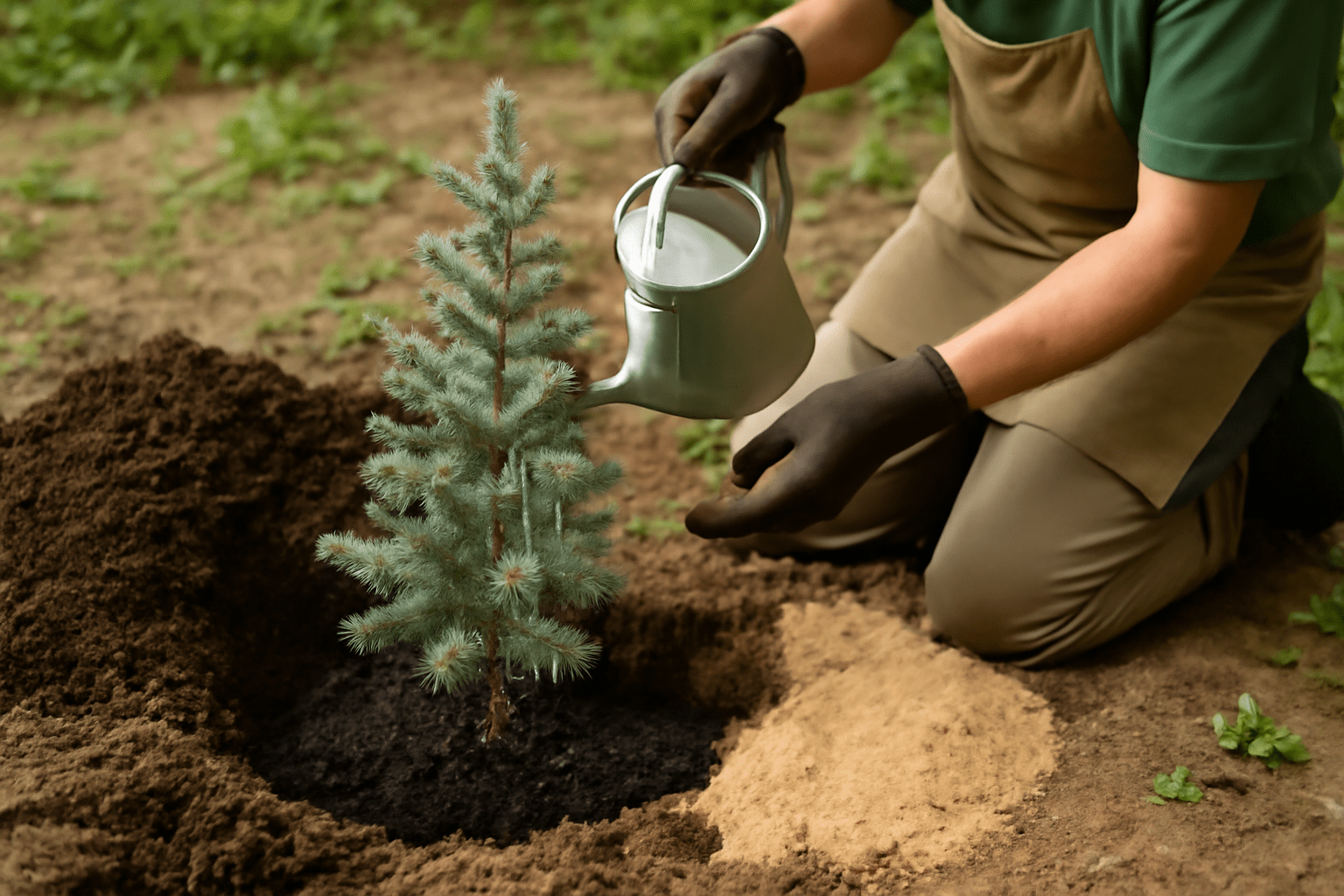
5. Mulching for Success 
A good layer of mulch around the base of your Blue Sequoia helps conserve moisture and regulate soil temperature. Use organic mulch, like wood chips or bark, but keep it a few inches away from the trunk to prevent rot. 
6. Pruning and Shaping 
While Blue Sequoias don’t require much pruning, you can shape them to maintain a neat form in your landscape. Remove any dead, damaged, or diseased branches as soon as you notice them. Early spring is the best time for pruning before new growth begins. Keep in mind that Sequoias grow best in their natural, tall form, so avoid cutting too much.
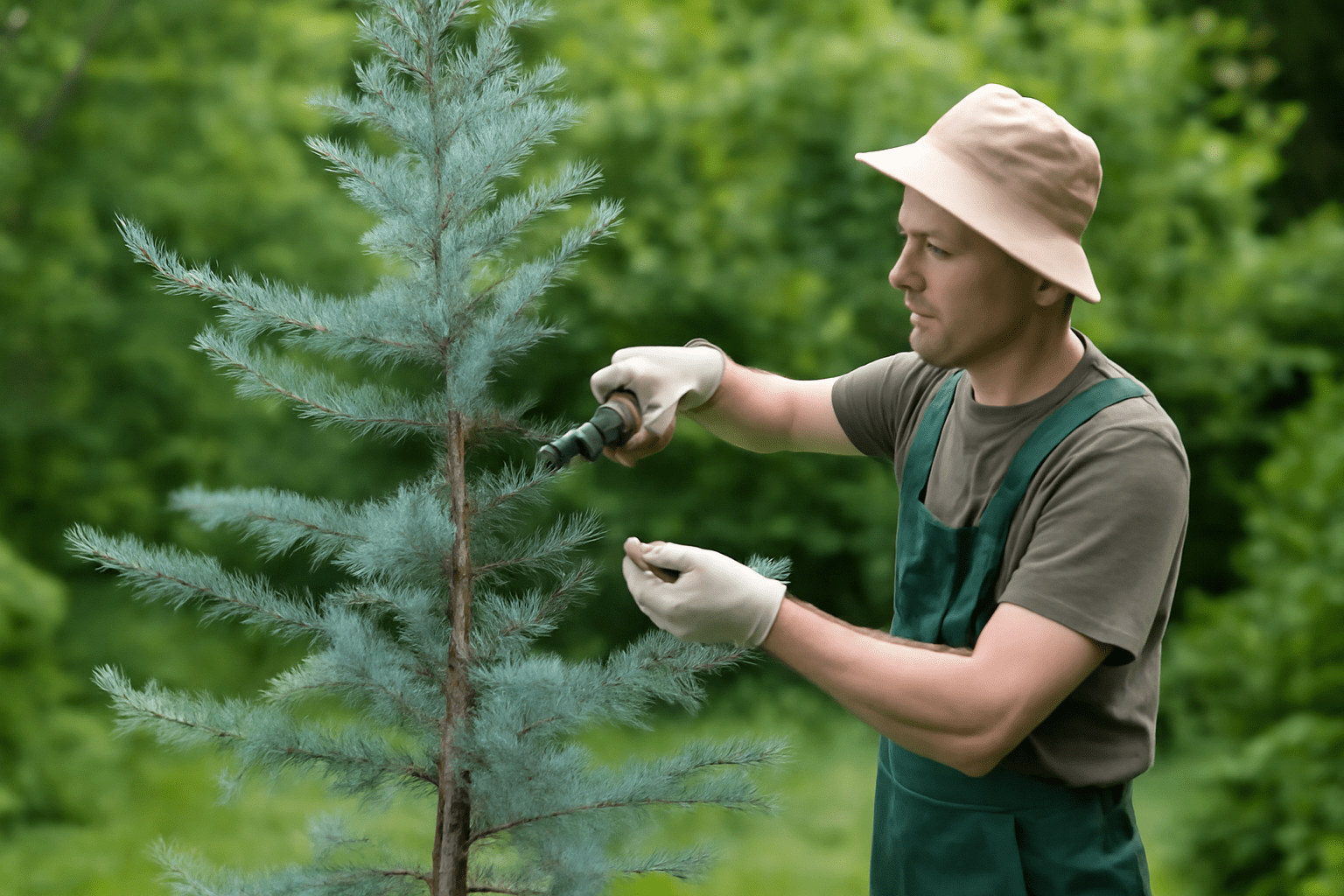
7. Fertilizing for Growth 
During the growing season, feed your Blue Sequoia with a slow-release fertilizer high in nitrogen. This encourages strong foliage growth. Use a balanced fertilizer in the spring or early summer, but be careful not to over-fertilize, as this can burn the roots. Avoid fertilizing in winter when the tree is dormant.
8. Keep an Eye Out for Pests and Diseases 
While Blue Sequoias are generally pest-resistant, they can occasionally attract pests like aphids, scale insects, or spider mites. Regularly inspect your tree for signs of trouble, such as yellowing leaves or sticky residue. If you spot any issues, treat the affected areas with an insecticidal soap or neem oil.
9. Patience Is Key 
Remember, growing a Blue Sequoia takes time! These trees are slow growers, especially in their early years. With proper care, they’ll slowly start reaching their majestic height. Be patient and enjoy watching your tree grow and thrive over the years.
Conclusion 
Growing a Blue Sequoia Tree can be a beautiful and long-lasting addition to your garden. By choosing the right location, preparing the soil, and providing ongoing care, you’ll be able to enjoy this stunning tree for generations. 
Happy planting!
Caring for Your Blue Sequoia Tree 
The Blue Sequoia tree, with its striking blue-green needles and impressive size, is a beautiful addition to any garden. Caring for it may seem daunting at first, but with a few simple guidelines, you can help your tree thrive and grow into a majestic beauty. Here’s what you need to know to keep your Blue Sequoia healthy and happy!
1. Planting Location 
Choosing the right spot for your Blue Sequoia is crucial for its growth. These trees love full sun, so pick a location where they can get at least 6 hours of sunlight daily. 
2. Watering 
While Blue Sequoias are fairly drought-tolerant once established, they still need regular watering when young. Keep the soil moist, but not soggy. A deep watering once a week is usually enough, but adjust based on the weather—more frequent watering during hot summer months may be necessary. Be sure to water at the base of the tree, not on the foliage, to prevent fungal diseases.
3. Soil Care and Fertilization 
The Blue Sequoia prefers slightly acidic to neutral soil, so check the pH of your soil before planting. Adding organic compost can improve soil structure and nutrient levels. Fertilize your tree in early spring with a balanced, slow-release fertilizer to encourage healthy growth. Avoid over-fertilizing, as this can lead to weak growth.
4. Pruning 
Pruning your Blue Sequoia helps maintain its shape and removes dead or damaged branches. For younger trees, light pruning is sufficient. As the tree matures, you may want to remove any lower branches to allow more space for the trunk to grow. Prune in late winter or early spring before new growth begins, ensuring the tree doesn’t lose too much energy during the growing season.
5. Pest and Disease Management 
While Blue Sequoias are generally resistant to pests and diseases, it’s always a good idea to monitor them regularly. Keep an eye out for common tree pests like aphids, spider mites, and scale. If you notice any signs of an infestation, treat with an eco-friendly insecticide or a mixture of water and dish soap. Ensuring your tree has proper airflow and doesn’t become too crowded will help prevent fungal infections.
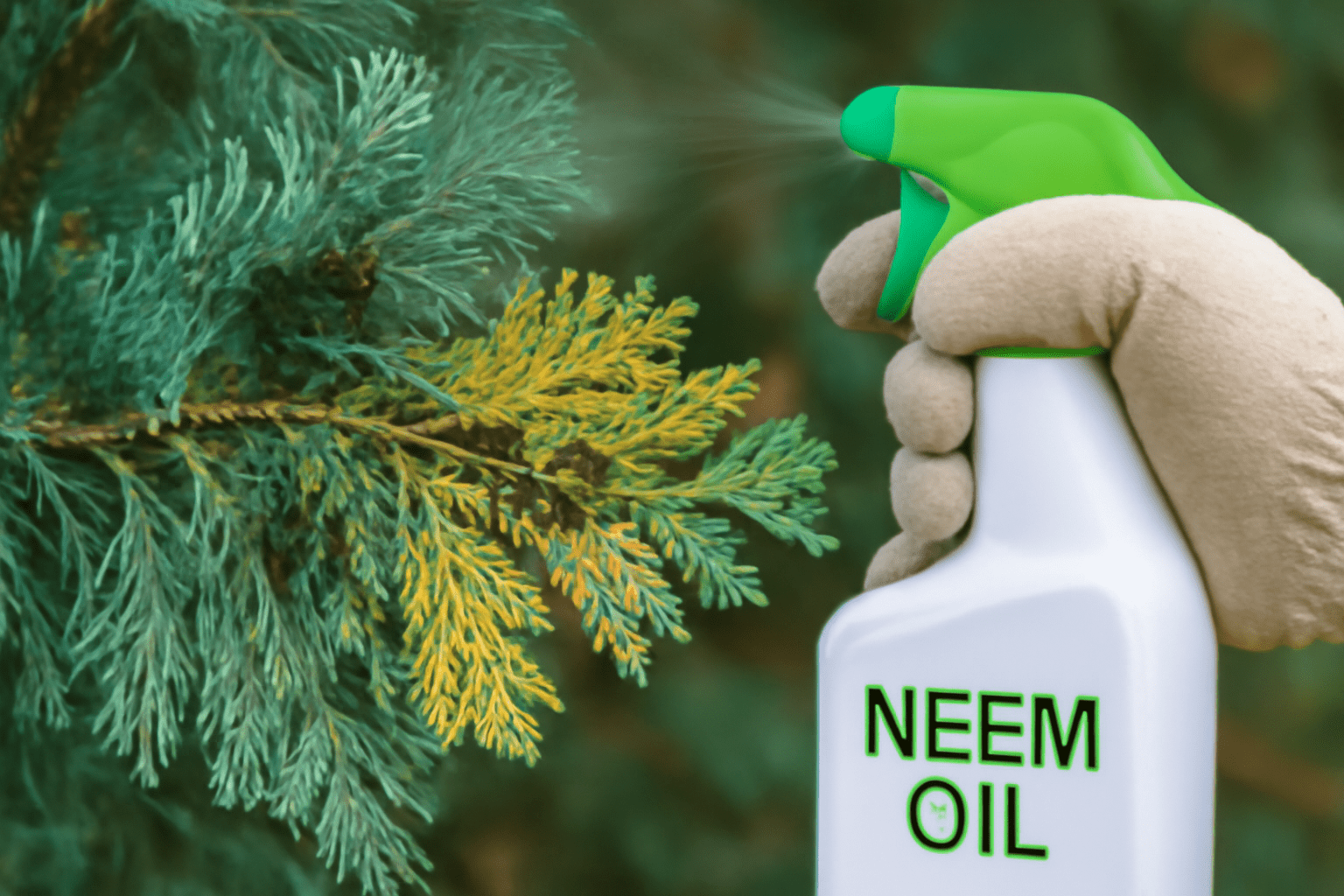
6. Mulching 
A layer of mulch around the base of your Blue Sequoia will help retain moisture, regulate soil temperature, and keep weeds at bay. Just be sure to keep the mulch a few inches away from the tree’s trunk to prevent rot. Organic mulches like wood chips or bark are ideal.
7. Winter Care 
If you live in an area where winters get cold, the Blue Sequoia can tolerate frost, but young trees may need some extra protection. Consider wrapping the trunk with burlap or using a tree guard to shield it from freezing temperatures. Avoid heavy snow build-up on branches to prevent breakage.
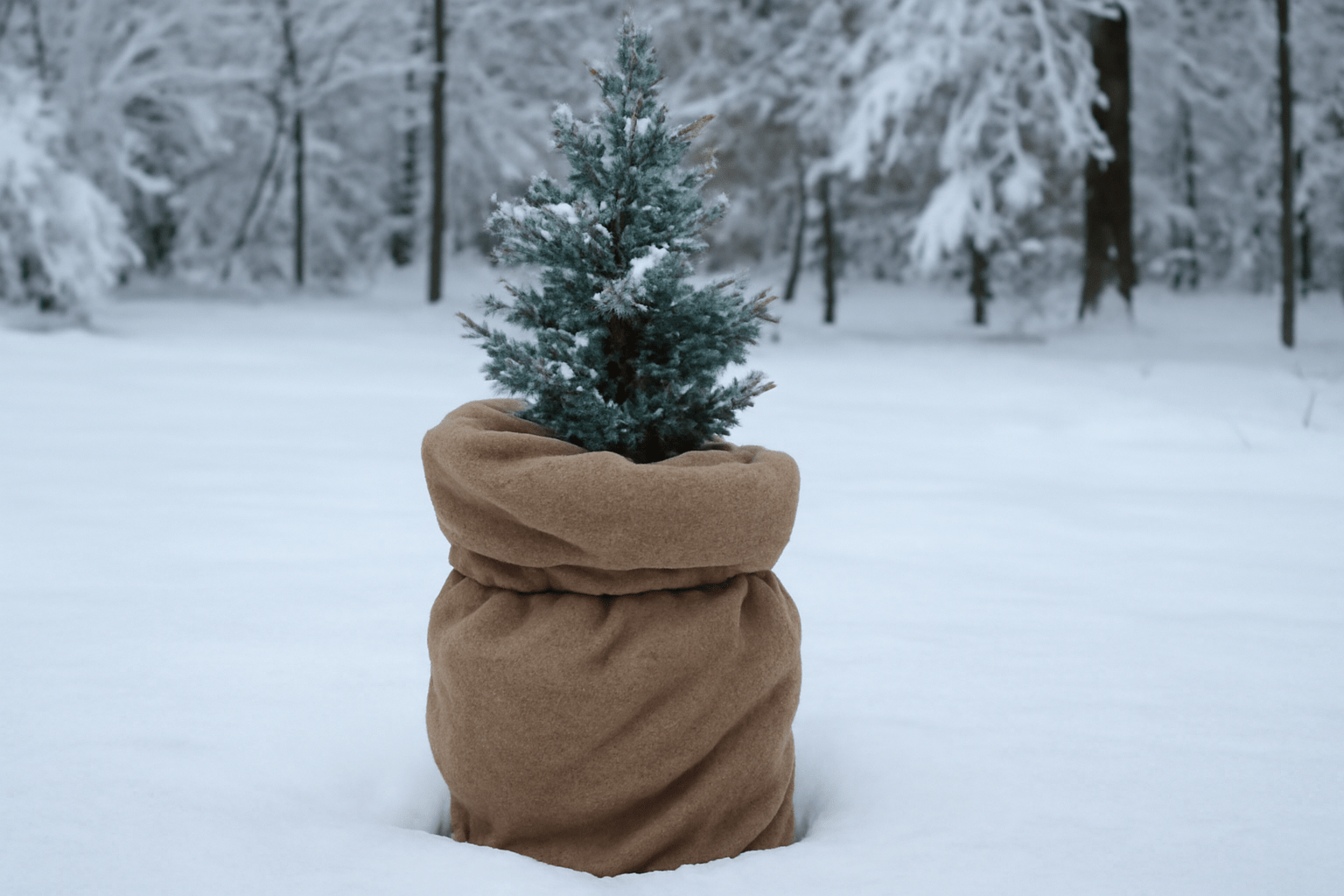
8. Patience and Growth 
Blue Sequoias grow slowly, especially in the first few years, so be patient. With proper care, they can eventually reach towering heights of 50–100 feet, becoming a stunning focal point in your garden or landscape. 
By following these simple steps, you can ensure that your Blue Sequoia grows strong and vibrant for many years to come. Happy tree gardening!
Common Issues and Troubleshooting 

Growing and caring for a Blue Sequoia tree can be incredibly rewarding, but like any plant, it can face a few challenges. Here are the most common issues you might encounter and how to solve them to keep your tree thriving!
1. Yellowing Leaves 
If your Blue Sequoia’s leaves turn yellow, it could be a sign of overwatering or poor drainage. The roots are sensitive to soggy soil, so ensure your tree is planted in well-draining soil. Reduce watering and allow the soil to dry out between waterings. If the issue persists, consider checking the soil for proper drainage or repotting if it’s in a container.
Quick Fix: Make sure the soil is moist, not soggy, and consider using a soil moisture meter for better control.
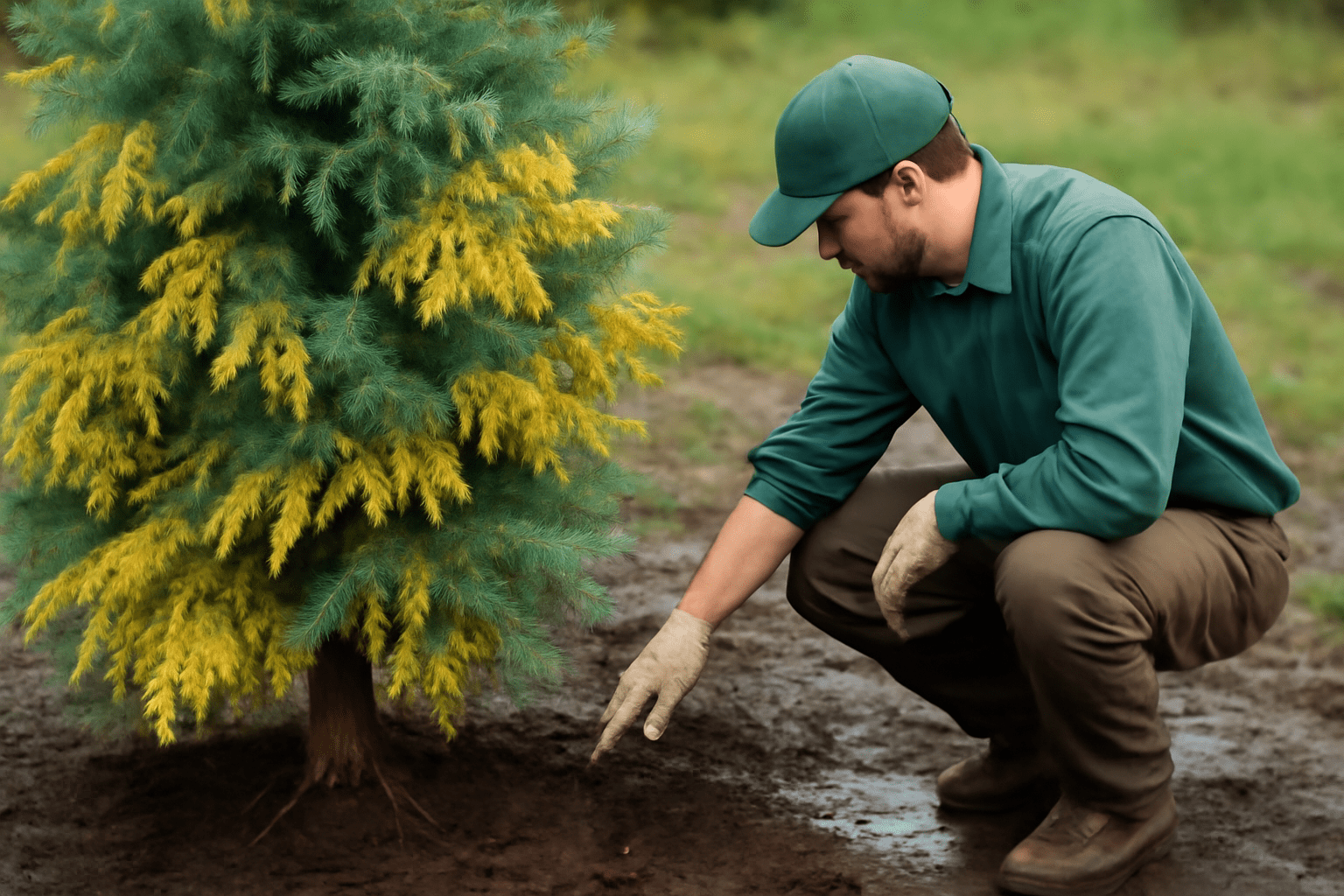
2. Browning Tips on Leaves 
Browning on the tips of the leaves is usually a sign of underwatering or low humidity. Blue Sequoia trees prefer consistent moisture, but they don’t like sitting in waterlogged soil. Try increasing humidity around the tree or water it more frequently, especially in hot or dry weather.
Quick Fix: Increase humidity by misting around the tree or using a humidity tray, and check if your watering schedule needs adjusting.
3. Pests and Insects 
While Blue Sequoias are generally pest-resistant, they can still attract insects like aphids or spider mites. These pests can cause yellowing leaves and slow growth. Keep an eye on the undersides of the leaves and branches for any signs of pests.
Quick Fix: Use an organic insecticidal soap or neem oil to safely treat the infestation. Be sure to follow the instructions on the label for the best results.
4. Slow Growth 
If your Blue Sequoia is growing slowly, it might be due to poor soil quality or lack of nutrients. These trees thrive in rich, well-fertilized soil. If the soil is lacking in nutrients, consider adding organic compost or a slow-release fertilizer to give your tree the boost it needs.
Quick Fix: Fertilize your tree with a balanced, slow-release fertilizer designed for evergreen trees.
5. Root Rot 
Root rot is one of the most serious issues for Blue Sequoia trees. It typically occurs when the tree is overwatered or the soil doesn’t drain well. Root rot can be identified by a foul smell or mushy roots when you inspect the plant.
Quick Fix: If you suspect root rot, carefully remove the tree from the soil, cut away the rotting roots, and replant it in fresh, well-draining soil. Be sure to reduce watering going forward and check that the tree has enough drainage.
6. Wilting or Drooping 
A drooping or wilting Blue Sequoia tree is often a sign of either overwatering or underwatering. Both can stress the tree, so it’s important to find a balance. If the soil feels dry, it’s time to water; if it’s soggy, reduce the watering frequency.
Quick Fix: Check the soil moisture before watering. Water deeply but allow the soil to dry out between waterings.
7. Discolored Needles 
If your Blue Sequoia’s needles turn brown or grayish, it may be stressed by extreme temperatures or lack of sunlight. Blue Sequoias need full sun to thrive, and exposure to strong winds or frost can damage the tree.
Quick Fix: If you’re growing your tree indoors, place it near a bright window or provide supplemental lighting. If it’s outside, consider relocating it to a more sheltered area away from strong winds.
By staying on top of these common issues, you’ll be well on your way to growing a healthy, thriving Blue Sequoia tree! Regular checks and care can prevent most problems, so keep an eye on your tree and enjoy the beauty it brings to your space 
Growing Blue Sequoia Trees in Different Environments 
Blue Sequoia trees are not only stunning but also versatile, thriving in various environments with the right care. Whether you live in a cool coastal region or a warmer inland area, these majestic trees can adapt and grow beautifully if given the proper attention. Here’s how to grow and care for your Blue Sequoia in different environments:
1. Coastal or Temperate Climates 
Blue Sequoias thrive in cool, moist conditions often found near coastlines or in temperate regions. These areas offer the mild temperatures and humidity that Blue Sequoias love. If you’re in such a climate, follow these tips:
- Sunlight: Choose a spot that receives plenty of full sunlight but is shielded from extreme winds. A location near the coast might offer more consistent moisture, which Blue Sequoias adore.
- Soil: Well-draining, slightly acidic soil is perfect for these trees. If your soil is too clay-heavy, consider amending it with organic matter to improve drainage.
- Watering: Blue Sequoias in coastal climates benefit from regular moisture. During dry spells, water them deeply to keep their roots hydrated. Ensure the soil stays moist, not waterlogged.
2. Dry or Hot Climates 
In hotter, drier regions, Blue Sequoia trees still thrive but need some special care to ensure their survival:
- Sunlight: While Blue Sequoias love sunlight, if you’re in a hotter zone, it’s essential to plant them where they can get morning sunlight and some afternoon shade, especially during the peak summer heat.
- Watering: Consistent watering is critical in dry climates. Deep water the tree regularly to promote strong root growth. Be mindful not to let the soil dry out completely. A layer of mulch around the base can help retain moisture and protect roots from extreme temperatures.
- Soil: Sandy or loamy soil that drains well is ideal. In arid environments, it’s especially important to ensure that the tree isn’t sitting in waterlogged soil, which can cause root rot.
3. Cold Climates with Winter Frost 
If you’re in a colder area with freezing temperatures in winter, growing Blue Sequoias requires some extra protection:
- Cold Hardiness: Blue Sequoias can tolerate a bit of cold but need a sheltered spot to avoid frost damage. Plant them in areas that are shielded from harsh winds and frost pockets, such as near a building or a fence.
- Winter Care: In areas with heavy snowfall or freezing conditions, consider wrapping the young trees in burlap to protect them from winter winds and snow. Mulch around the base helps keep the roots insulated.
- Watering: During the colder months, water less frequently, but don’t let the soil dry out completely. If temperatures rise and thaw the ground, give the tree a good drink.

4. Urban Environments 
Blue Sequoia trees can also do well in urban environments, but they do require specific conditions to thrive in these settings:
- Air Quality: Urban areas may have pollution, but Blue Sequoias are surprisingly resilient. Make sure they are planted in an area with adequate air circulation to help them grow.
- Soil: Often, urban soils are compacted. It’s best to dig a large planting hole and amend the soil with compost or organic material to ensure your Blue Sequoia’s roots have space to spread and grow.
- Watering and Care: Due to increased heat from buildings and concrete, watering can be trickier. Be consistent in watering but ensure that the soil isn’t saturated. Urban trees often suffer from heat stress, so planting near larger structures for some shade will keep your Blue Sequoia happy.
Final Tips for Success 
- Tree Size: Remember that Blue Sequoias can grow incredibly tall! Always plant them with enough space to expand both their root system and their canopy.
- Regular Care: Prune dead branches to help your Blue Sequoia grow strong and healthy, and keep an eye on pests or diseases that might appear.
- Patience: These trees grow slowly but surely. With consistent care, you’ll enjoy their stunning blue foliage for years to come.
By adjusting your care routine based on your local climate and environment, you can enjoy a thriving Blue Sequoia tree for many years!
How to Maintain Long-Term Health and Longevity for Your Blue Sequoia Tree 
Taking care of a Blue Sequoia Tree requires more than just planting it and hoping for the best. For your tree to thrive over the long term, it needs consistent attention to its health. Here’s how you can ensure your Blue Sequoia remains strong, healthy, and beautiful for years to come:
1. Provide Consistent Watering 
While Blue Sequoias are drought-tolerant, they thrive best with regular watering, especially when young. Deep watering encourages deep root growth, which is vital for their long-term health. Aim to water your tree once a week, depending on the weather, making sure the soil is moist but not soggy. During hot summers, increase the frequency slightly.
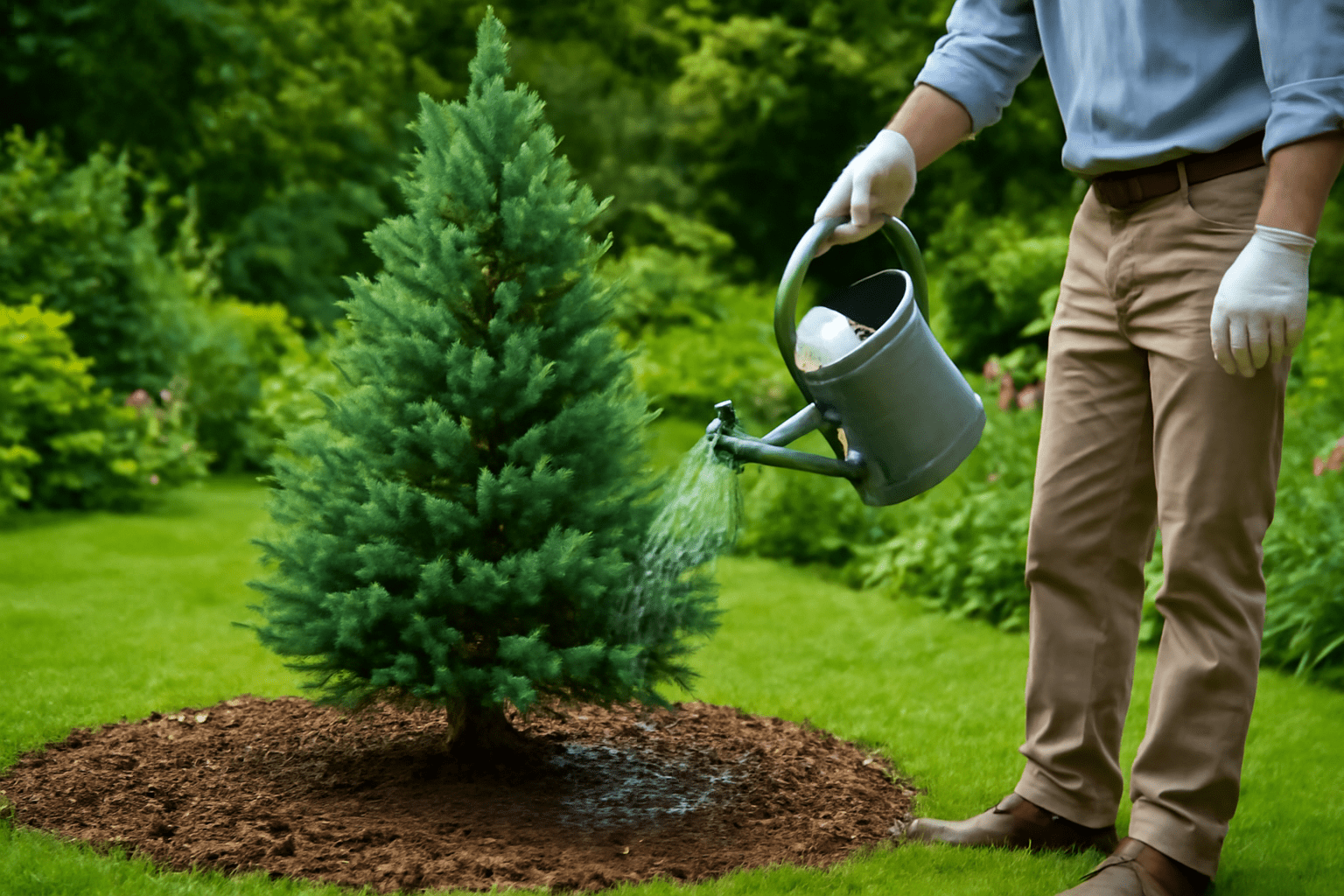
2. Mulch to Retain Moisture and Protect Roots 
Mulching around the base of the tree is a simple and effective way to keep moisture in the soil, regulate temperature, and protect the roots from extreme conditions. Use organic mulch, like wood chips or bark, and apply it in a 3-4 inch layer around the base, leaving a small gap around the trunk to prevent rot.
3. Prune Carefully for Shape and Health 
Pruning helps maintain the tree’s shape and removes any dead, diseased, or damaged branches. Trim back dead growth, but avoid cutting into the main branches or the top central leader, as this could stunt the tree’s growth. Pruning is best done in early spring before new growth begins.
4. Fertilize for Strong Growth 
Blue Sequoias grow best when they receive balanced nutrients. A slow-release fertilizer with an NPK ratio (Nitrogen, Phosphorus, Potassium) of 10-10-10 is ideal. Apply fertilizer in the early spring, but avoid over-fertilizing, as this can lead to excessive, weak growth. Over time, you may also see the soil naturally improve, reducing the need for frequent feeding.
5. Protect from Pests and Diseases 
Regularly check for common pests like aphids, spider mites, or scale insects. These can weaken your tree if left unchecked. If you spot any, treat with an organic insecticidal soap or neem oil. Also, watch for signs of fungal diseases like root rot, which can affect Blue Sequoias if the soil is too wet. If root rot appears, improve drainage and avoid overwatering.
6. Ensure Proper Soil Drainage 
Blue Sequoia trees do not like to sit in soggy soil. Ensure the soil is well-draining, as poor drainage can lead to root rot. If your soil doesn’t drain well, consider planting your Blue Sequoia on a raised mound or using a soil amendment to improve its structure. This will keep the roots healthy and allow the tree to flourish.
7. Be Patient and Avoid Over-Stressing the Tree 
Blue Sequoias are slow-growing trees. They may not show rapid growth early on, but with proper care, they can live for hundreds of years. Avoid transplanting your tree too often or stressing it with sudden environmental changes. Patience is key when growing these magnificent trees, so take your time and enjoy watching them grow over the years.
By following these tips, you can help your Blue Sequoia tree thrive for many years to come, providing you with beauty and enjoyment for generations!
Conclusion
The Blue Sequoia Tree is a true marvel, capable of transforming your garden into a breathtaking landscape with its towering height and stunning blue-green foliage. While this tree requires a little patience and attention in its early years, once established, it offers minimal maintenance while rewarding you with years of beauty and grandeur.
By following the right planting techniques, providing optimal care with proper watering, fertilizing, and occasional pruning, your Blue Sequoia tree will thrive and continue to impress. Remember, choosing the right location and understanding its needs for space and sunlight are key to success.

If you’re ready to embark on this journey, rest assured that with the right knowledge and dedication, your Blue Sequoia Tree can become a timeless addition to your garden. With its resilience, stunning appearance, and impressive growth, this tree will be a true centerpiece that continues to grow for generations.
Call to Action:
Start your Blue Sequoia Tree today! Whether you’re planting it as a future family heirloom or simply for the beauty it brings, the journey to growing this majestic tree is one that will bring joy and fulfillment for years to come.
Happy planting, and enjoy watching your Blue Sequoia grow into the magnificent tree it’s meant to be!
Frequently Asked Questions(FAQ)
How fast does a Blue Sequoia tree grow?
Blue Sequoia trees grow quickly in their early years, adding 2-3 feet of height annually under ideal conditions. However, their growth rate slows down as they mature, and they may take several years to reach their full height of 50-80 feet in a garden setting.
What is the best location to plant a Blue Sequoia tree?
Plant your Blue Sequoia in a spot that receives full sunlight for most of the day. It thrives in well-draining, slightly acidic soil and requires plenty of space to grow, so choose a location away from other large trees or structures to accommodate its size.
Can Blue Sequoia trees survive in cold climates?
Yes, Blue Sequoia trees can survive in USDA zones 6-8. While they are fairly cold-hardy, young trees might need protection from extreme cold, especially in harsh winters. Consider using burlap wraps or other protective measures during freezing temperatures.
How often should I water a Blue Sequoia tree?
Water young Blue Sequoia trees regularly, especially in the first few years after planting. Once established, they are drought-tolerant but still benefit from occasional deep watering during dry spells to support their growth and health.
How do I know if my Blue Sequoia tree is healthy?
A healthy Blue Sequoia will have vibrant blue-green foliage, strong upright growth, and no signs of disease or pests. If the needles turn yellow, drop prematurely, or if growth slows down, it may indicate issues such as poor soil drainage or nutrient deficiency.
Do Blue Sequoia trees require a lot of maintenance?
Once established, Blue Sequoia trees are low-maintenance. You’ll need to prune only occasionally to remove dead or diseased branches and apply mulch to maintain soil moisture. Avoid over-fertilizing, as this can damage the tree’s roots and encourage shallow growth.
What kind of soil is best for Blue Sequoia trees?
Blue Sequoia trees prefer well-draining soil with a slightly acidic to neutral pH (around 6-7). Sandy loam or loamy soil is ideal, but they can tolerate a range of soil types as long as it drains well and does not stay soggy.
How long does it take for a Blue Sequoia tree to reach its full size?
Blue Sequoia trees take several decades to reach their full height of up to 300 feet in the wild, but in a home garden, they typically reach 50-80 feet over the course of 30-50 years. Growth will vary based on environmental factors like sunlight, soil, and watering conditions.



